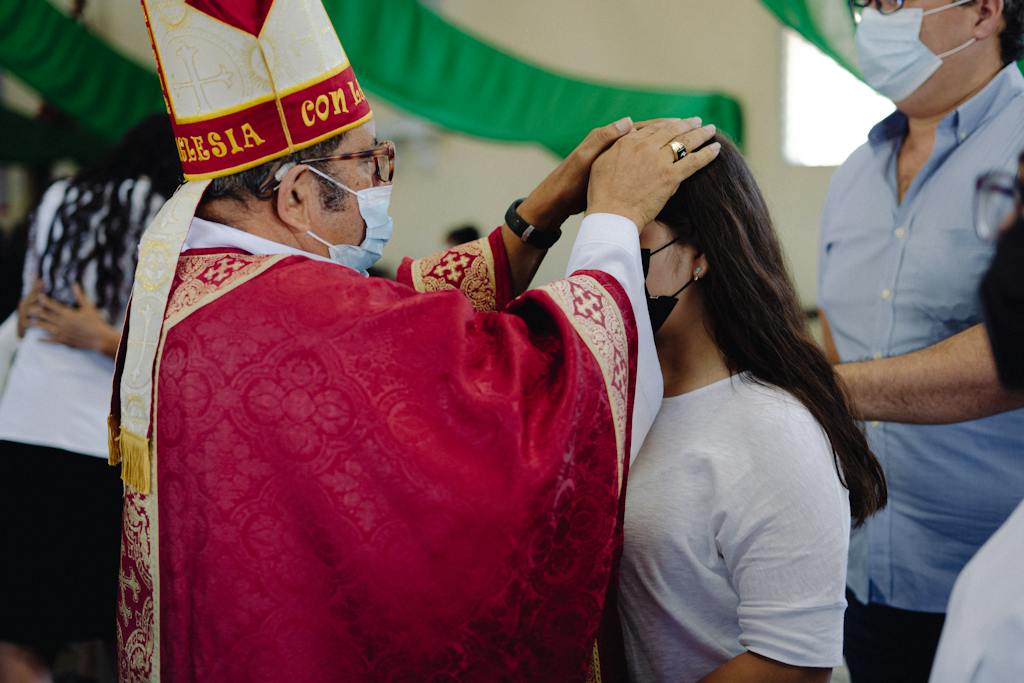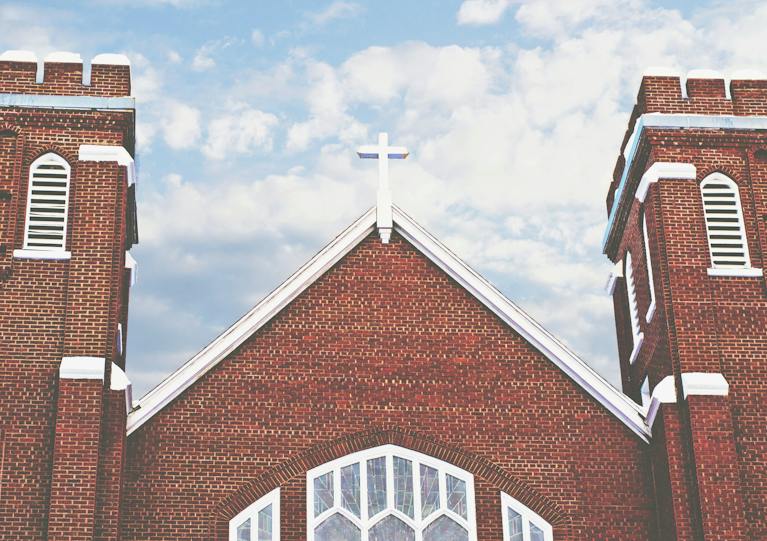What is confirmation in the Catholic Church?
Confirmation is one of the seven sacraments of the Catholic Church. It is the sacrament through which Catholics receive the fullness of the Holy Spirit, strengthening them in their Christian life. Confirmation completes the grace received at Baptism and seals Catholics as witnesses for Christ.
The History and Purpose of Confirmation
The laying on of hands to confer the Holy Spirit is seen throughout the New Testament. In Acts 8, we read of Peter and John praying for and laying hands on new believers so they might receive the Holy Spirit. Over time, the Catholic Church formalized this into the sacrament of Confirmation, establishing set procedures and standardizing the age for its conferral.
Confirmation has several purposes:
- It strengthens the recipient’s bond with the Church through the gifts of the Holy Spirit. These gifts help Catholics live their faith more actively.
- It roots the recipient more deeply in their divine filiation, or adoption as a son or daughter of God. Through Confirmation, Catholics are more profoundly united to Christ.
- It obliges Catholics to spread and defend the faith, both in word and deed. The confirmed become witnesses for Christ in the world.
- It completes the process of initiation into the Catholic Church begun at baptism. Catholics now have access to the fullness of the Church’s sacramental life.

Key Concepts of Confirmation
There are several key concepts that are important for properly understanding Confirmation:
Age for Confirmation
- The customary age for Confirmation is between 7 and 16 years old in the Latin Catholic Church. The average age tends to be early-to-mid teens.
- The Church suggests receiving First Communion before Confirmation so that the Eucharist—the center of Catholic life—is enabled through the gifts of the Spirit.
Role of the Bishop
- The bishop typically celebrates the sacrament because confirmation strengthens one’s bond with the church. This expresses the apostolic unity of the Church through the bishop’s leadership.
Chrism/Anointing with Oil
- The sacramental matter of confirmation is the anointing with chrism oil by the laying on of hands. During Holy Week, a bishop blesses olive oil, which is known as chrism.
- Anointing symbolizes the outpouring of the Holy Spirit, strengthening the recipient’s bond with the church. This mirrors Jesus being “anointed” by the Spirit at his baptism.
Choosing a Sponsor
- Those confirmed may choose a sponsor, like godparents at Baptism, to assist in preparation and represent the support of the Church community. Sponsors must be confirmed Catholics who are committed to the practice of the faith.
Saint Name and New Creation
- Those confirmed often choose the name of a saint they admire. This places the confirmand under the saintly role model’s patronage.
- Confirmation names represent a new creation through this second sacrament of initiation. Recipients become new creations, transformed by the Holy Spirit.
Rite of Confirmation in the Catholic Church
So what actually happens during the Rite of Confirmation itself? Here is an overview of the standard ceremony:
Introductory Rites
- The ceremony begins with introductory rites. Scripture is read, linking the sacrament to the apostolic origins of Confirmation. The bishop leads the faithful in prayer to prepare them.
Renewal of Baptismal Promises
- The confirmands stand before the bishop and renew the vows, or baptismal promises, their godparents made for them as infants at their baptism.
- By renewing these promises personally, the confirmands express their own desire and commitment to live the Catholic faith given to them at Baptism.
Laying on of Hands
- The bishop extends his hands over the group and prays for the descent of the Holy Spirit. This laying on of hands connects today’s confirmands to the first outpouring of the Spirit at Pentecost.
Anointing with Chrism
- The bishop then anoints each confirmand. Using the chrism oil he consecrated on Holy Thursday, he makes the sign of the cross on the person’s forehead while speaking a prayer for an outpouring of the Holy Spirit.
Concluding Rites and First Communion
- Finally, there are concluding rites, including a blessing from the bishop for the newly confirmed. Many also receive their first communion during the confirmation mass.
The effects of this powerful, transformative sacrament continue working within the newly confirmed. But the confirmand must cooperate with God’s grace to fan this gift of the Spirit into flame, actively participating in the life of the Church and bearing witness to Christ by word and deed.
Confirmation Equips Catholics for Discipleship
Confirmation spiritually equips Catholics for committed discipleship and apostolic work in Christ’s name. Through confirmation, the Spirit strengthens believers to imitate Christ and empowers them to spread the faith as courageous witnesses. This completes their initiation into Christ’s mystical body, the Catholic Church.
Sealed with the gift of the Holy Spirit, Catholics now participate in the priestly, prophetic, and kingly work of Jesus Himself. That amazing reality is what the powerful, age-old sacrament of confirmation bestows.
I hope this overview has provided clarity on what confirmation is and does according to the Catholic Church’s teaching and practice. Please let me know if you have any other questions!







